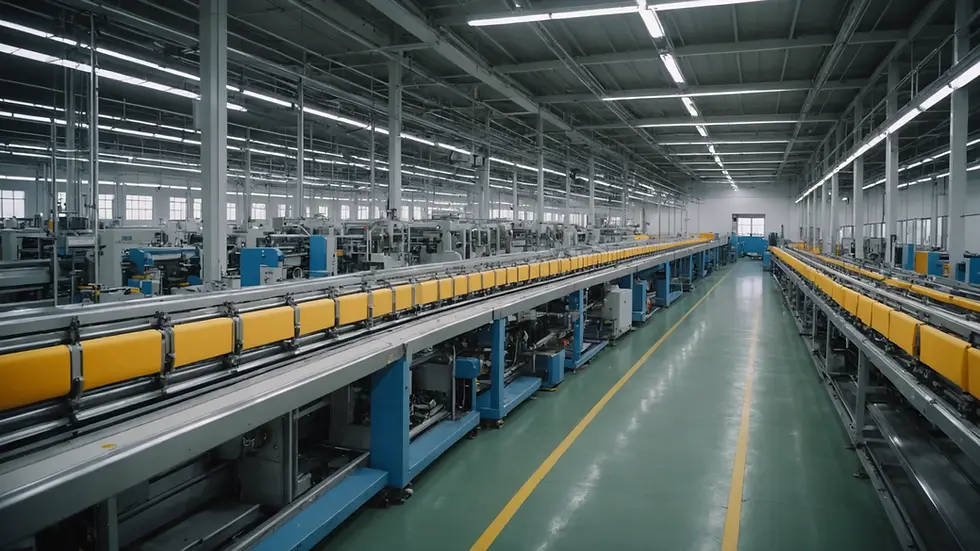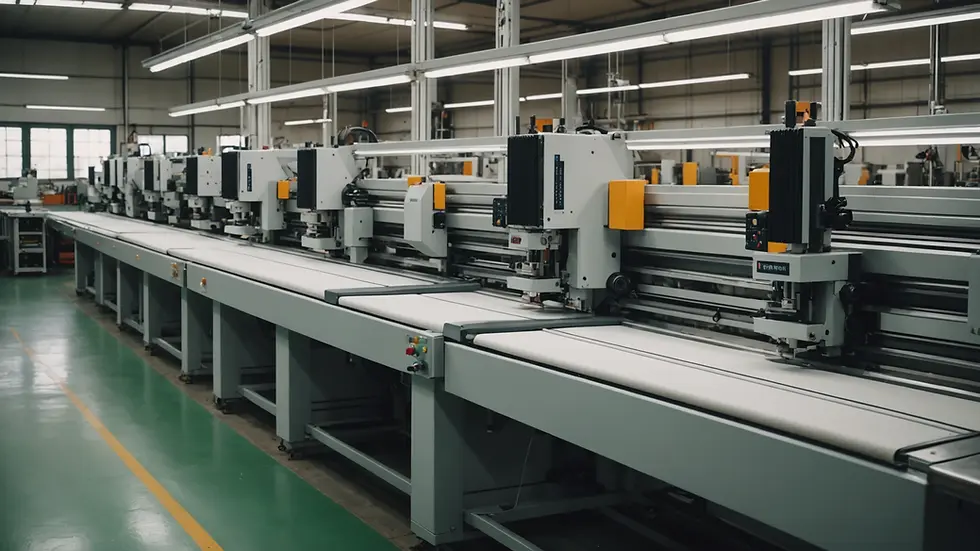Unveiling the Impact of Digital Transformation on Textile Manufacturing: A Data-Driven Approach to Efficiency and Quality Enhancement
- Syed Qasim
- Feb 25
- 3 min read
Digital transformation is reshaping various industries, and textile manufacturing is no exception. The integration of cutting-edge technologies into textile production processes is giving manufacturers a powerful boost in efficiency and quality. In this post, we will explore three essential aspects of this transformation: automation in textile production, IoT applications in textile manufacturing, and the benefits of data-driven decision-making.
Automation in Textile Production
Automation has become a key element of modern textile manufacturing. By utilizing robotics and state-of-the-art machinery, manufacturers can streamline production processes and decrease human error. For instance, automated cutting machines can increase cutting speed by up to 30%, while sewing robots can boost seam accuracy to 99%. These improvements are crucial in a competitive market.
Additionally, automated quality control systems monitor the production line in real time. By spotting defects early, these systems ensure that only high-quality products reach consumers. Take, for example, the case of a leading textile manufacturer that implemented an automated quality assurance system; they reported a 25% reduction in defective products, which significantly improved customer satisfaction.
Automation also contributes to safer workplaces. By assigning hazardous or repetitive tasks to machines, workers can focus on more complex, creative roles. This shift not only safeguards employees but also increases overall productivity. In a recent study, companies that adopted automation noted a 15% rise in employee productivity as workers engaged in higher-value tasks.
IoT Applications in Textile Manufacturing
The Internet of Things (IoT) is transforming the textile industry by enabling machine-to-machine communication and data sharing. For example, machines equipped with IoT sensors can send alerts when maintenance is required. This predictive maintenance can reduce downtime by 20%, allowing for smoother operations and increased output.
Moreover, IoT applications enhance supply chain management. By tracking materials and products in real time, manufacturers can optimize their inventory and reduce waste by up to 30%. A textile company that embraced IoT technology was able to cut excess inventory by 25%, improving cash flow and minimizing surplus.
These advancements also enable better forecasting. With accurate data on market demand, manufacturers can align production levels accordingly. This agility allows them to respond quickly to shifts in consumer preferences, reducing the risk of overproduction and unsold stock.

Advantages of Data-Driven Decision-Making in Textiles
One of the most significant benefits of digital transformation in textile manufacturing is the ability to make informed, data-driven decisions. By using advanced analytics, manufacturers can gain insights into operations, production efficiency, and market trends.
For instance, data analytics may uncover workflow bottlenecks that slow down production. Companies utilizing data-driven strategies can respond by optimizing processes, resulting in a potential 20% increase in production speed. Furthermore, being aware of consumer preferences through data analytics helps shape product development and marketing efforts effectively.
Real-time analytics enable manufacturers to adapt quickly to changing market conditions. Instead of relying on instinct or outdated data, they can make informed tactical decisions. This swift responsiveness enhances competitiveness and fosters a culture of innovation. For example, a textile brand that analyzed customer data to introduce eco-friendly fabrics saw a 40% increase in sales within a year.
Sustainability is another critical area where data-driven methods shine. By examining resource use and waste generation, manufacturers can adopt greener practices while saving costs. For instance, a company that analyzed energy consumption reduced its energy expenses by 15% through more efficient usage.
Looking Ahead: Embracing Change in Textile Manufacturing
The impact of digital transformation on textile manufacturing is profound. Through automation, IoT technology, and data-driven decision-making, manufacturers can improve efficiency and product quality.
As the industry evolves, adapting to these technological advances is vital. Each investment in digital transformation opens up new possibilities, leading to a more efficient, sustainable, and innovative future in the textile sector. Embracing these changes will allow textile manufacturers to thrive in an ever-competitive landscape.




コメント